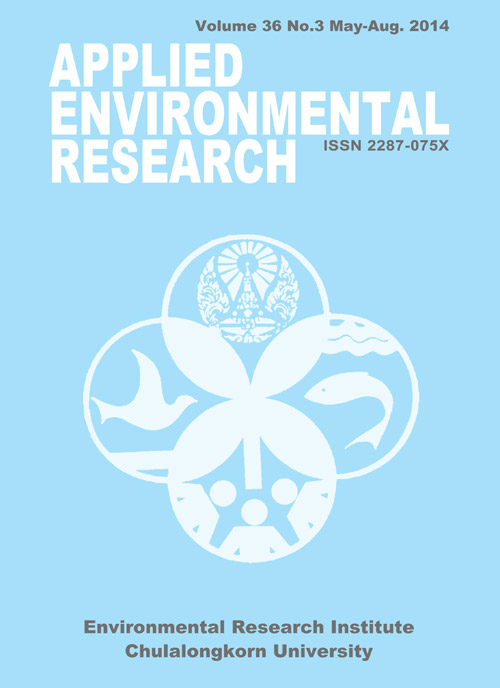Development of GIS Database for Insecticide Usage and Toxicity among Thai Farmers in Ubon Ratchathani Province, Thailand
Main Article Content
Abstract
Widespread use of pesticides in Thai agriculture has led to serious adverse health impacts on users. This study developed a GIS database using the QGIS tool to investigate insecticide usage and toxicity to farmers in Ubon Ratchathani Province in northeastern Thailand. Primary data collection involved recording exact locations of residential houses using geographic positioning system (GPS). Secondary data including transport routes, natural and environmental resources, and records of rainfall and ground temperatures were also collected. The data were integrated as GIS mapping data. Eighteen farmers participated in the study and submitted themselves to measurements of cholinesterase (ChE) levels and 2 blood sample collections for comparison with standard ChE levels. Results revealed the GIS database to be an effective tool to capture, store, manage, search, analyze, and represent spatial data and correlate them with insecticide usage. The GIS database revealed that ChE levels of volunteers for pre-post-exposure were within normal ranges. Liver enzymes (AST and ALT) were also within normal ranges. Further study should broaden collection of essential data including demographic information and basic knowledge and perceptions of self-protection regarding insecticides. Further evaluation and refining of the GIS database approach are recommended to improve its effectiveness as an analytical tool to enhance safe use of pesticides.
Article Details

This work is licensed under a Creative Commons Attribution-NonCommercial 4.0 International License.
Published articles are under the copyright of the Applied Environmental Research effective when the article is accepted for publication thus granting Applied Environmental Research all rights for the work so that both parties may be protected from the consequences of unauthorized use. Partially or totally publication of an article elsewhere is possible only after the consent from the editors.

